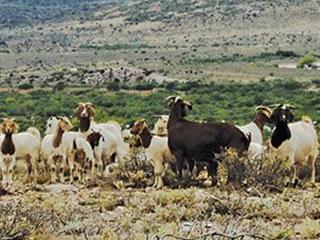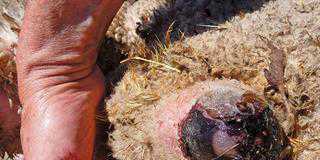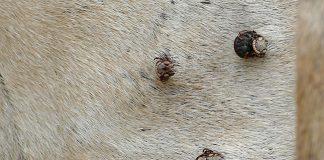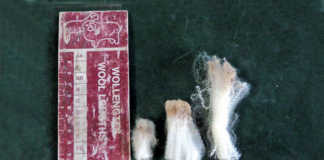
Overstocking with goats has been blamed for desertification in Africa and Asia, as well as for the destruction of the Eastern Cape’s valuable spekboom thickets. But dedicated goat farmers will tell you that goats, if well managed, can improve degraded veld and combat bush encroachment. In the US, entrepreneurs rent out flocks of goats to clear overgrown plots – even in residential areas.
Most of the world’s semi-arid regions each have at least one indigenous breed of goat that has evolved over thousands of years to survive in those specific conditions. The hairy Angora in Turkey, and Nigeria’s Ouda are two well-known examples. Kept for meat and milk, the latter has long, slender legs which help it to walk considerable distances in search of food.
Over the past century or so, many of these indigenous breeds have been genetically improved to produce better and more meat, hair and milk, while retaining their natural hardiness.
Better breeds
South Africa’s famous Boer goat, together with its cousins the White Savannah and Kalahari Red, were all bred from indigenous stock. These breeds are well-suited to modern producer and consumer demands – they grow quickly, have better carcasses and are more fertile than their predecessors. Unfortunately for beginner farmers, buying good quality pure-bred Boer goats or Angoras is expensive.
These goats also demand higher nutritional needs and require more attention. The Angora, for example, is sensitive to cold wet weather and can die if not protected from such conditions. This helps to explain why most communal or emerging farmers run a diverse mixture of cross-breeds that retain elements of Boer goat, milk goat, Angora and indigenous goat types. These are often quite large animals with big udders, indicating good milk production.
Despite their size, they do well on sparse vegetation. They are also tough and seldom get sick. Virtually the only threat they face is from stock thieves. Cross-bred goats are ideal for communal farming, where control of rams is almost impossible. By contrast, pure-bred ewes have to be serviced by pure-bred rams, which requires proper fencing and careful management.
Going commercial
With all the advantages of cross-breeds, why should a small-scale farmer consider switching from them to the modern breeds such as Boer goats or Angora? The answer lies in genetic management. The performance of cross-breds is unlikely to improve as time goes by. But with breeds such as Angoras or Boer goats, the goal is to continually select better rams and ewes, thus producing more meat and milk as well as a greater number of kids weaned. If you are content with keeping a few goats for your own use, cross-breeds are adequate. If, however, you are considering commercial farming, pure breeds are the only realistic option.
Better profits
Once you start improving your flock through better selection, you’ll soon find that goats offer numerous opportunities for value adding and making more money. Good quality slaughter goats always fetch a good price. In fact, commercial goat farmers claim that meat goats have proved to be the most reliable type of small stock. There is always a market and it is never affected by global affairs or exchange rates. And if your animals are of a really high standard, you might even be able to sell breeding ewes and rams to fellow farmers at much more than the meat price.
You might consider going into partnership with a local butcher to make special goat meat dishes – like sausages and patties.
Other value adding possibilities are special mohair products from Angoras or cheese from milk goats. Making cheese is relatively complex and challenging, but offers rich rewards for producers who have a passion for cheese and are able to find the right market.
In summary, pure goat breeds offer more options, more value adding opportunities and a greater chance of success than most livestock. If you own cross-breed goats, you are already at an advantage by being familiar with these animals. Going one step further and breeding with ‘the real thing’ could pay you handsomely in the long term. In the second series, we’ll look at the importance of good husbandry practices.













